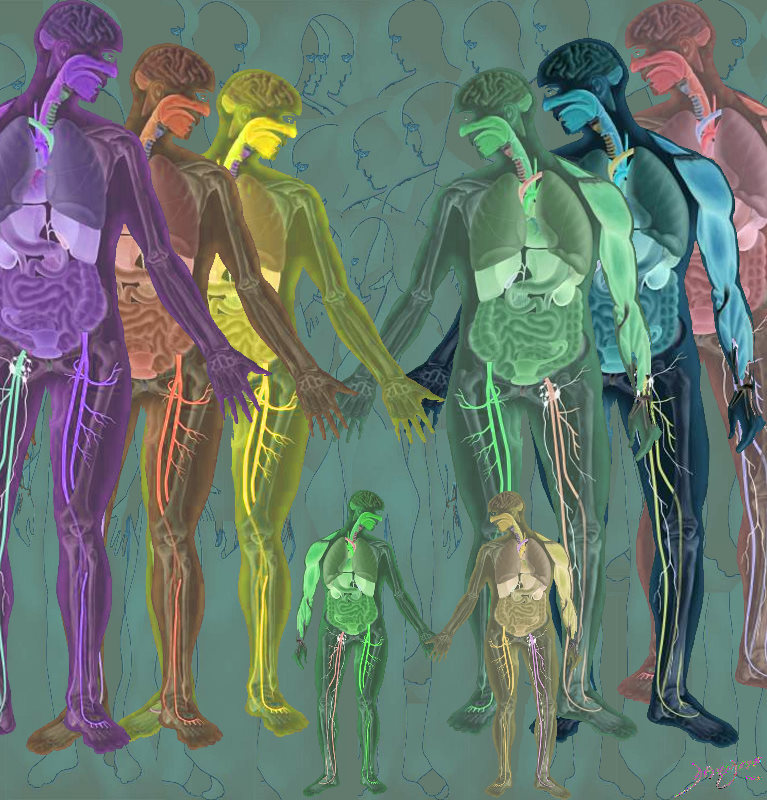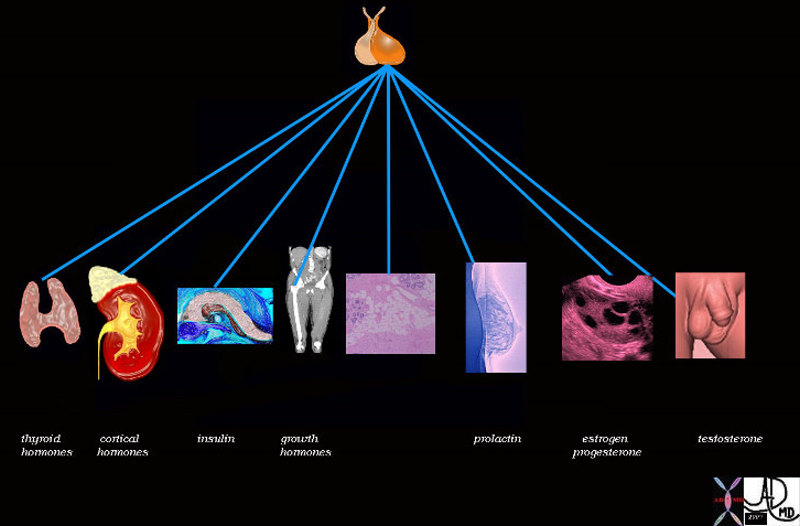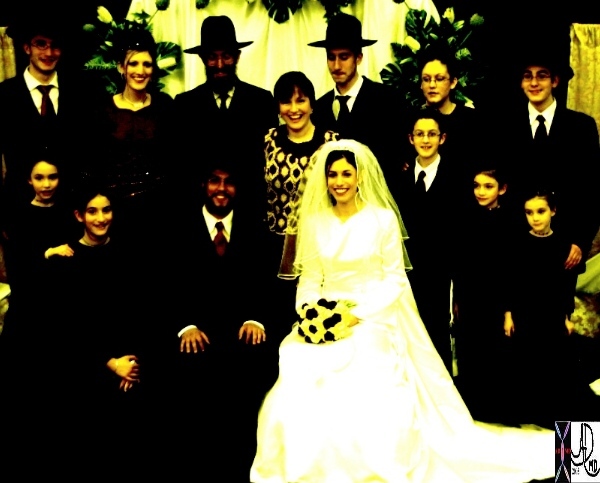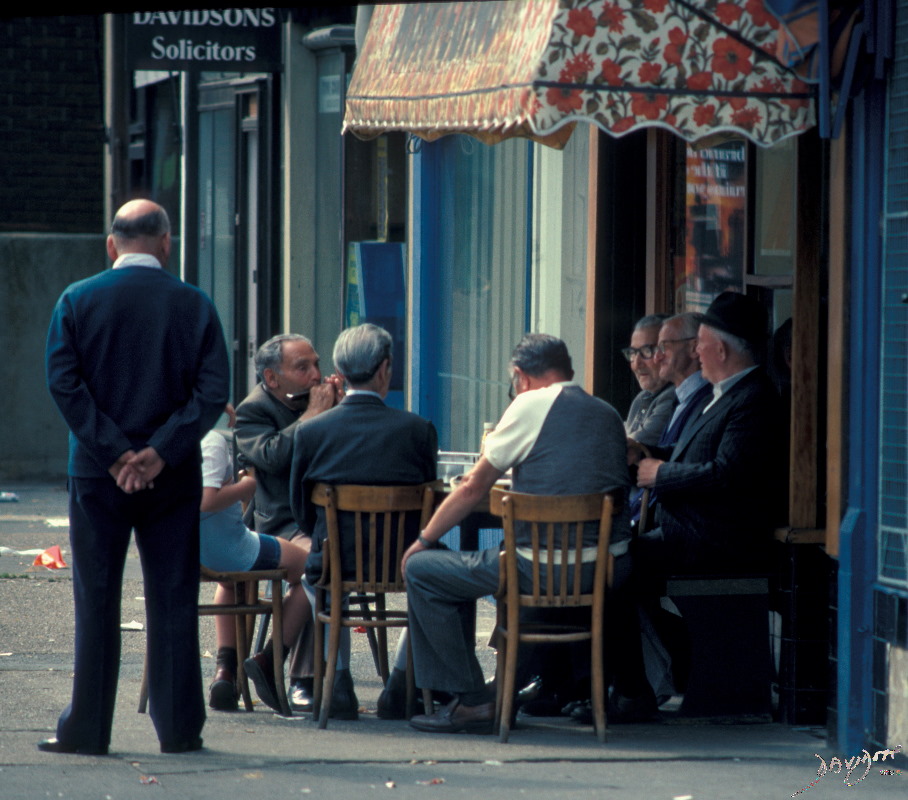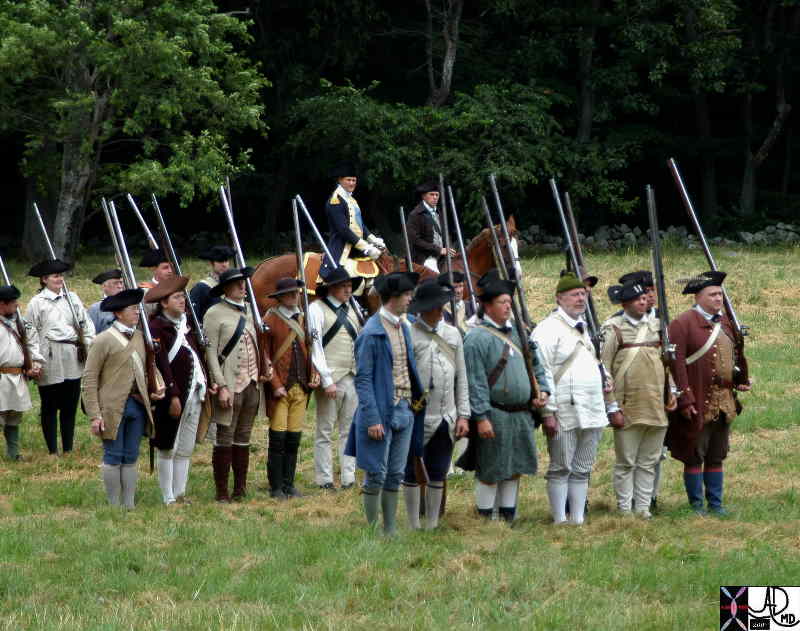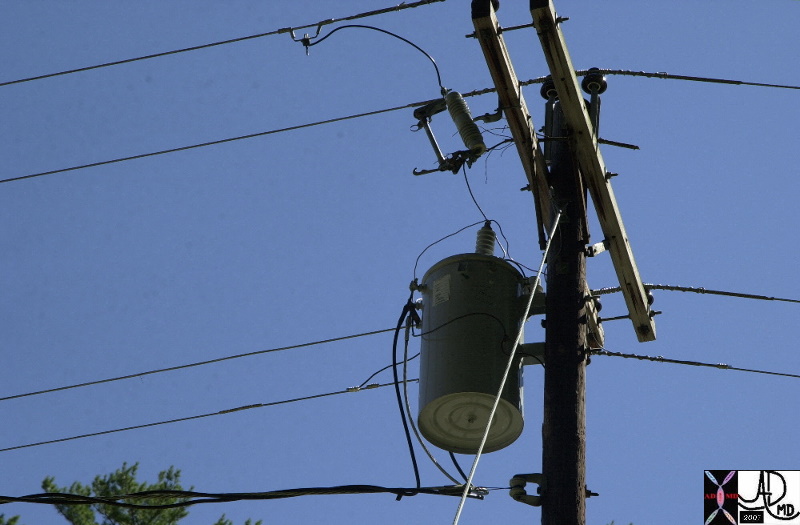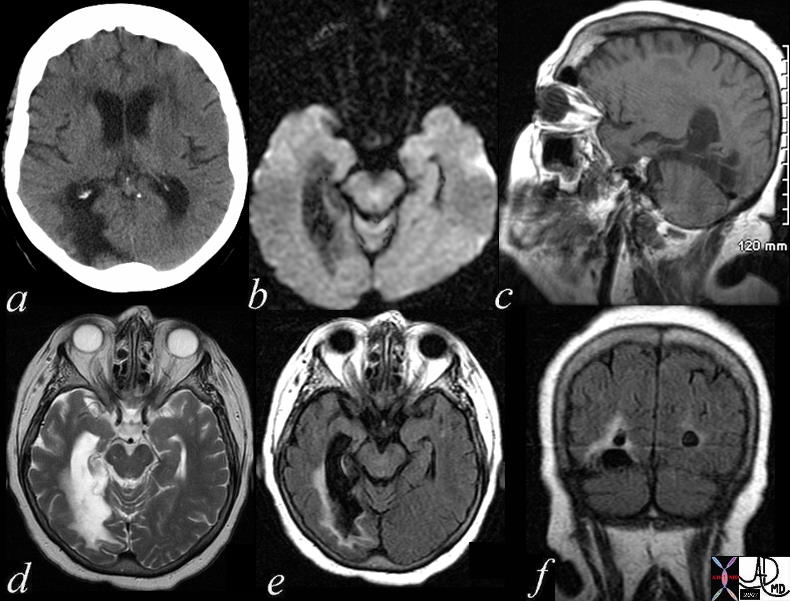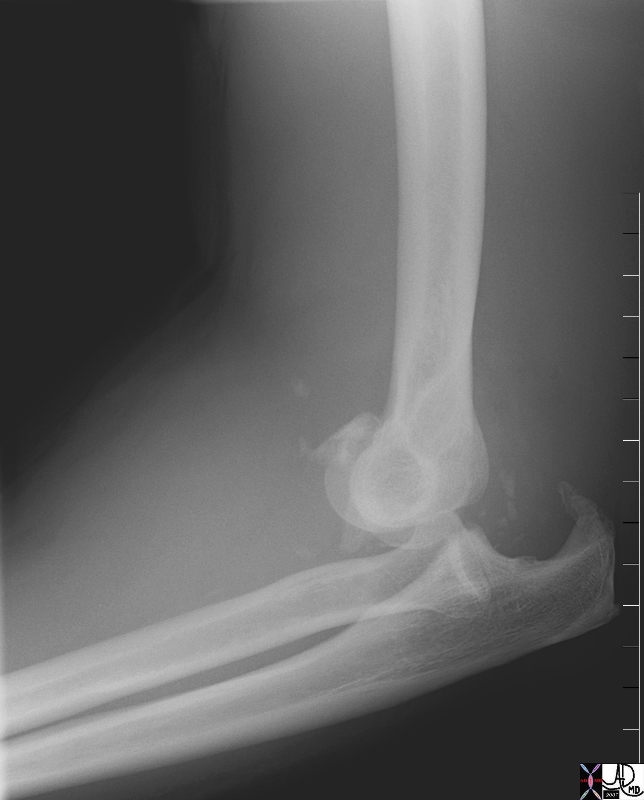?A bond is the glue that makes parts whole?
In the introduction to “Parts” we touched on the profound importance of organization, connection and integration. The only way that ?units to unity? can materialize is through strong and meaningful connections. This concept applies not only to the parts of the body but also to pieces of information. Information in isolation is meaningless. It is through connections and integration that information becomes knowledge.
The manner in which the parts are connected and related is the key to the genius of chemistry and biology.
In the Beginning….. The Atom
For Example The Hydrogen Atom
A Single Positive and Single Negative Force Bond through
Coulombic Attraction and Electrostatic Forces

The primary electromagnetic bonding force, also known as the Coulomb force is responsible for the attraction or repulsion between charged particles, such as electrons and protons. It is one of the fundamental forces in nature and plays a crucial role in holding atoms and molecules together. The electromagnetic forces within a hydrogen atom play a crucial role in holding its structure together. A hydrogen atom consists of a single proton in its nucleus and one electron orbiting the nucleus. The electromagnetic forces between the proton and the electron are responsible for the stability and structure of the atom.
Ashley Davidoff TheCommonVein.net forces-0002
The Result – A New and Unique Structure
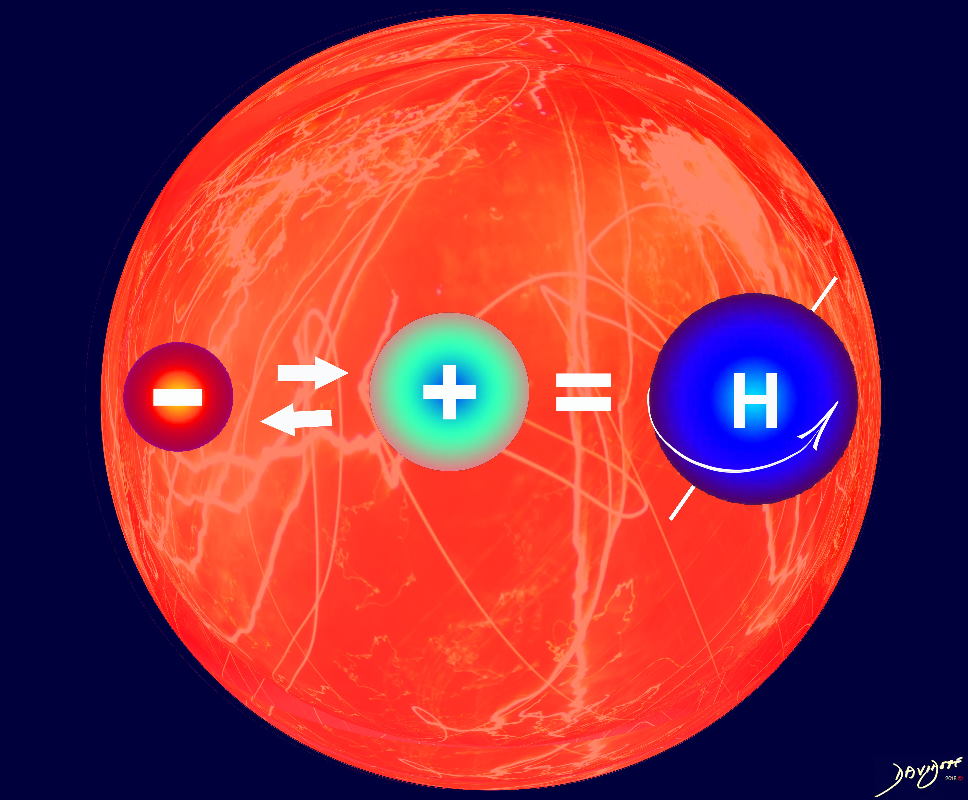
After the big bang, one of the first interactions between the electrons and protons was in the formation of the hydrogen atom An electron (unit 1) with a negative charge interacted with a proton (unit 2) with a positive charge in the heated environment in the space of the universe, at a moment in time, and a new and unique unit 3, called the hydrogen atom was formed. Because the interaction resulted in a spinning charge, an electromagnetic field was set up and the atom also spun in space in a unique way that was not characteristic of neither the proton nor the electron.
The hydrogen atom is the building block of all else to come.
Ashley Davidoff TheCommonVein.net big-bang-0057
The hydrogen atom is an individual particle consisting of one proton and one electron, while the element hydrogen encompasses all atoms with an atomic number of 1.
Then The Molecule …
Example The Water Molecule
Covalent Bonds (Electron Sharing) are the
Primary Forces
Also Electronegativity and Hydrogen Bonding
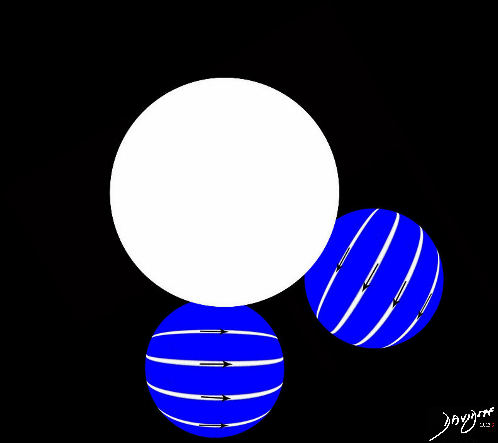
Ashley Davidoff MD TheCommonVein.net big-bang-0013
Complexity Grows
Then Macromolecules
Example Organic Macromolecules
Carbohydrates Proteins and Lipids
Held Together
Mostly by Covalent Bonds
An organic macromolecule consists of carbon, oxygen, nitrogen, and hydrogen bonded in different formats. They play crucial roles in diverse functions of living cells.
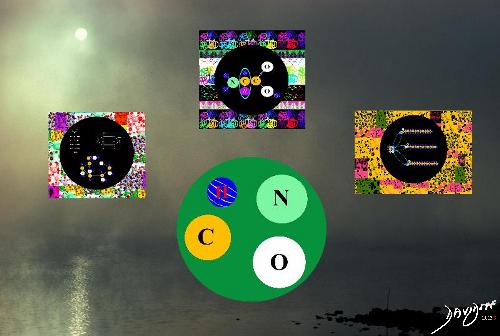
This diagram shows the primary elements that make up organic molecules including; carbon (C), hydrogen (H), oxygen (O), and nitrogen (N) – (center diagram) , carbohydrates (left) proteins (top center) and lipids or fats (right)
Ashley Davidoff MD TheCommonVein.net big-bang-0016
- Carbohydrates
-
- held together by Glycosidic Bonds, (Covalent Bond).
-
- Proteins
-
- held together by Peptide Bonds, ( Covalent Bonds)
-
- Lipids
-
- Held together by Nonpolar Covalent Bonds
-
Then to Organelles
Example – The Nucleus
Nucleotides Held together by Hydrogen Bonding
The primary building blocks of the nucleus are nucleotides, which are the basic structural units of nucleic acids, including DNA (Deoxyribonucleic Acid) and RNA (Ribonucleic Acid).
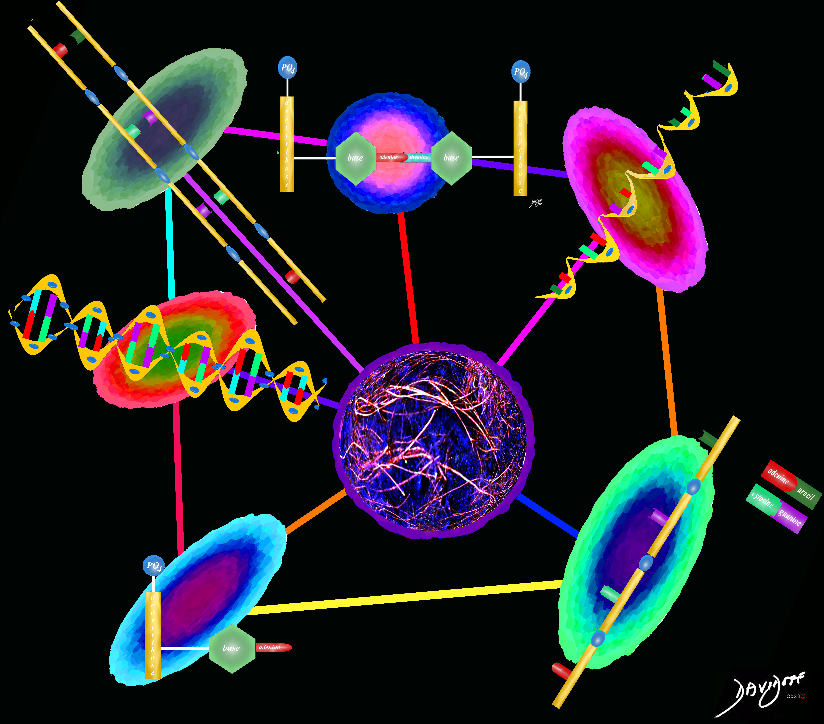
The primary building blocks of the nucleus are nucleotides, which are the basic structural units of nucleic acids, including DNA (Deoxyribonucleic Acid) and RNA (Ribonucleic Acid). A nucleotide is composed of three main components (bottom left)- a phosphate group -(blue button), a sugar molecules – deoxyribose in DNA and ribose in RNA – (orange bar) and the nitrogenous base (green hexagon) – one of four adenine, thymine, cytosine and guanine (DNA) and uracil in RNA. Single stranded RNA in straight form (bottom right) and in spiral form and in spiral form (top right) represent the infrastructure of messenger RNA. The double stranded equivalent double stranded DNA evolve from these nucleotides as well and displayed in top middle , top left and middle right)
Ashley Davidoff MD TheCommonVein.net TCV-0074b
- Hydrogen bonding is a
-
- weaker type of bond that occurs when a
- hydrogen atom is attracted to a
- highly electronegative atom (usually oxygen or nitrogen)
- in a nearby molecule.
-
Then to the Cell
Bonding of the Organelles
Mechanisms of Bonding Become More Complex Via
Vesicle Transport
Cytoskeleton
Protein Filaments with Intracellular Transport
Signal Transduction
Signaling Molecules
Exocytosis and Endocytosis
These mechanisms collectively contribute to the dynamic and coordinated functioning of organelles within a cell.
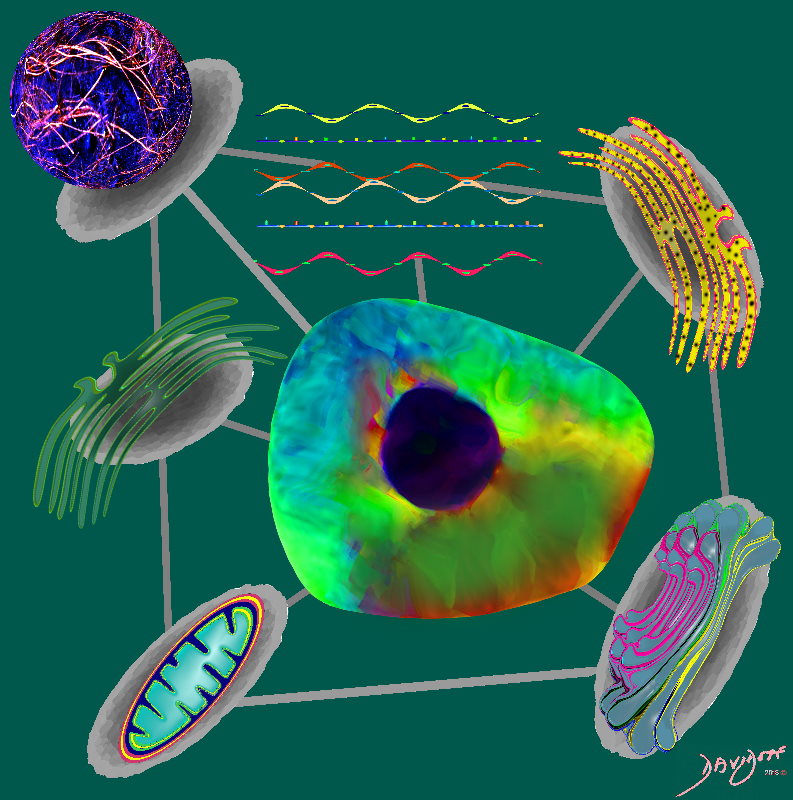
The organelles of the cell bond in structure and function to create a single entity – the cell
The nucleus is the central focus of the cell and it is bonded to the organelles including the smooth and rough endoplasmic reticula, Golgi apparatus, mitochondrion, lysosome, and messenger RNA.
Ashley Davidoff MD TheCommonVein.net TCV-0071
A Side Note
There are 37.2 Trillion Cells in One Body
They Can Work Co-operatively Through
Efficient Bonding and Communication-
Why Cant We?

The Cells know how to do it- Why don’t we?
Ashley Davidoff
TheCommonVein.net
Then to the Organ
eg the Liver
Bonding of Cells Through
Cell Adhesion
Cadherins
Integrins
Selectins
Immunoglobulin Superfamily Molecules
Tight Junctions, Desmosomes, and Gap Junctions
Bonding of Liver Cells
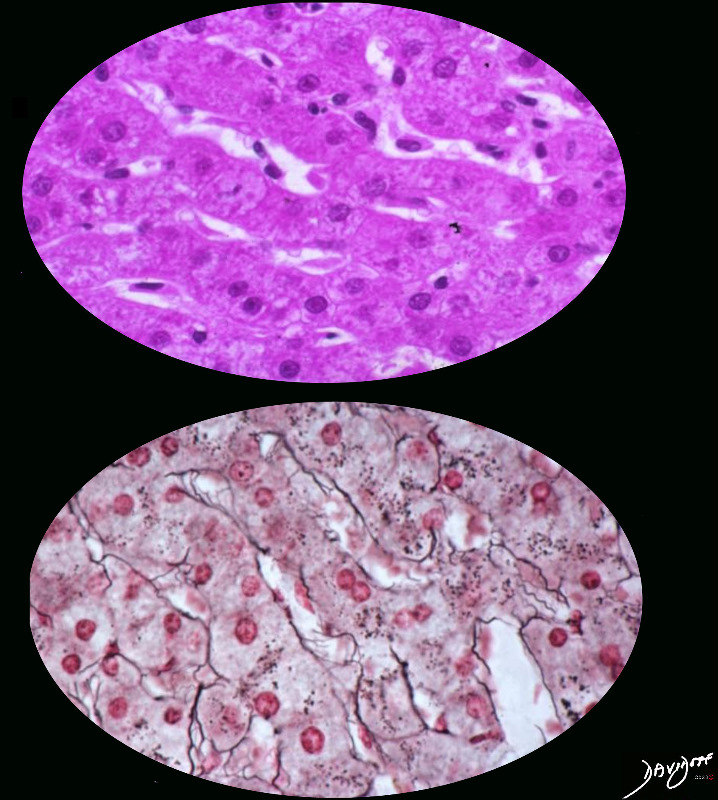
The primary contributors to liver cell adhesion include cell adhesion molecules, particularly cadherins, and specialized junctions including desmosomes, gap junctions and tight junctions .The histology image above (H & E Stain) shows liver tissue tightly bonded in sheets of cells surrounding the sinusoids. The bottom image shows the mesh-like reticulin network (black strands), which is a structural component of the extracellular matrix (ECM)
Ashley Davidoff MD TheCommonVein.net liver-0036
The primary contributors to liver cell adhesion include cell adhesion molecules, particularly cadherins, and specialized junctions including desmosomes, gap junctions and tight junctions .
Bonding of the Tissues to Form the Organ
Example The Liver
(Starting Bottom Left and Proceeding Anticlockwise)
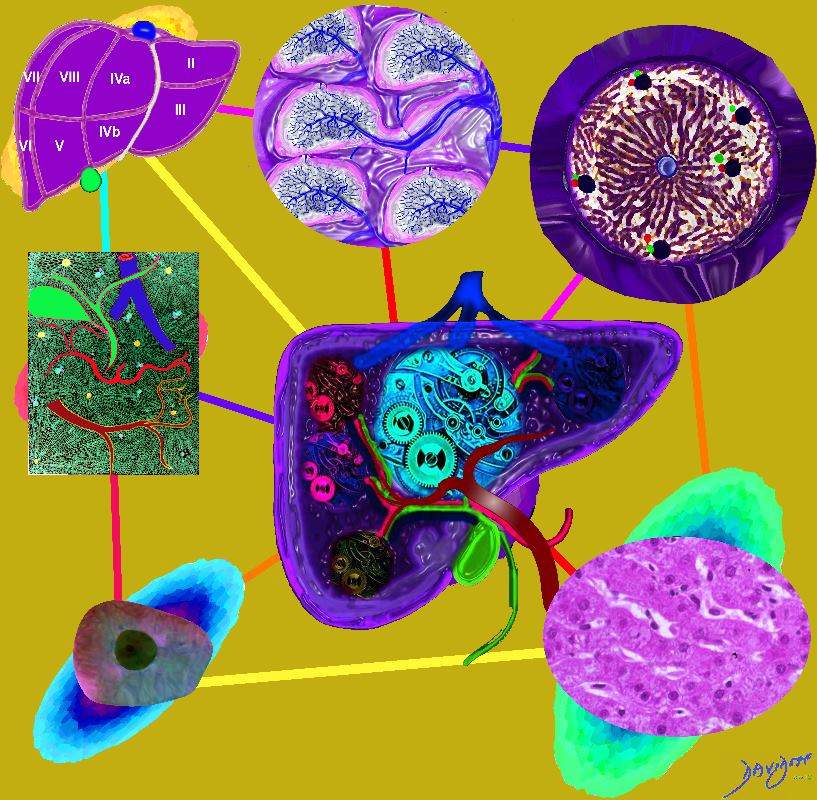
The diagram reveals the parts of the liver and how they bond to form the organ. At the bottom left is the the liver cell or hepatocyte which is a polygonal-shaped cells with a central nucleus. They form bands of tissue separated by the sinusoids (bottom right. The functional unit is called a lobule, are organized into functional units called lobules within the liver. Each lobule contains by 6-8 portal triads on the periphery. The hepatic arteriole and portal venule both feed into the sinusoid, which supply blood to the lining hepatocytes and the by products of the hepatocytes are exported into the sinusoid finally ending in the central venule. The venule drains each lobule and they in turn drain into the hepatic veins and finally the IVC (top middle) The lobules combine to form segments of the liver (top left). The image at middle left shows the major connections of the liver. The biliary system is noted in bright green, the arteries (bright red) portal vein (maroon) and the hepatic veins (blue).
Ashley Davidoff MD TheCommonVein.net liver-0035b
At the cellular level the 250 billion cells of the liver need to be connected related and integrated in a way that enables them to act as a single unit, as the metabolic warehouse of the body. The ability of nature to organize 250 billion cells into a single harmonious group is a lesson to be learned and an amazing story to be told.
For the liver to function, it is imperative that the transport systems be in intimate contact with cells in order that food, oxygen, and water are transposed and that waste products are removed. Two hundred and fifty billion cells of the liver need to be connected, related, and integrated in a way that they are able to act as a single functional unit. The organization of the liver cells and cords in the liver lobule is pure elegance.
The key element for the cell is how it can be connected to structures it depends on. The cells of each organ deal with this problem in a different way. Therefore, when studying the histology of the gastrointestinal tract, the pancreas, or the lung, note will be made of differing organizational patterns that optimize function. These patterns are relevant not only to marvel at the genius of nature, but also to understand that when disease distorts the structure, function will suffer.
Then to the Body At The Organ Level
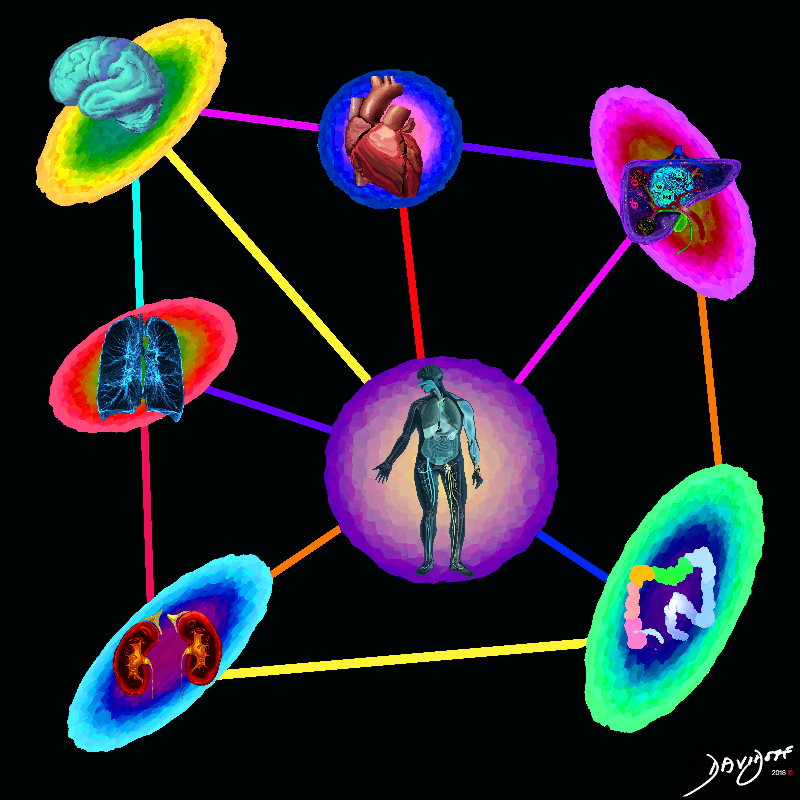
The organs of the body, bond in structure and function to create a single entity – the body
The brain is the central controlling and integrating organ of the body and it is linked to the organs via nerves. Blood vessels, ducts and hormones also serve to connect the organs
Copyright Ashley Davidoff MD
TheCommonVein.net
TCV-0072
Bonding Occurs at a
Structural Level and a Chemical Level via
Structural Bonding
Arteries Veins Lymphatics Nerves Ducts and Connective Tissues
Nerves Lymphatics Arteries Veins Ducts
bonds-0002-catalogue-signed.jpg
Blood Vessels Lymphatic and NervesStructural Bonds in the Body
Ashley Davidoff TheCommonVein.net bonds-002
Transport Systems Enabling Structural Bonding in the Body
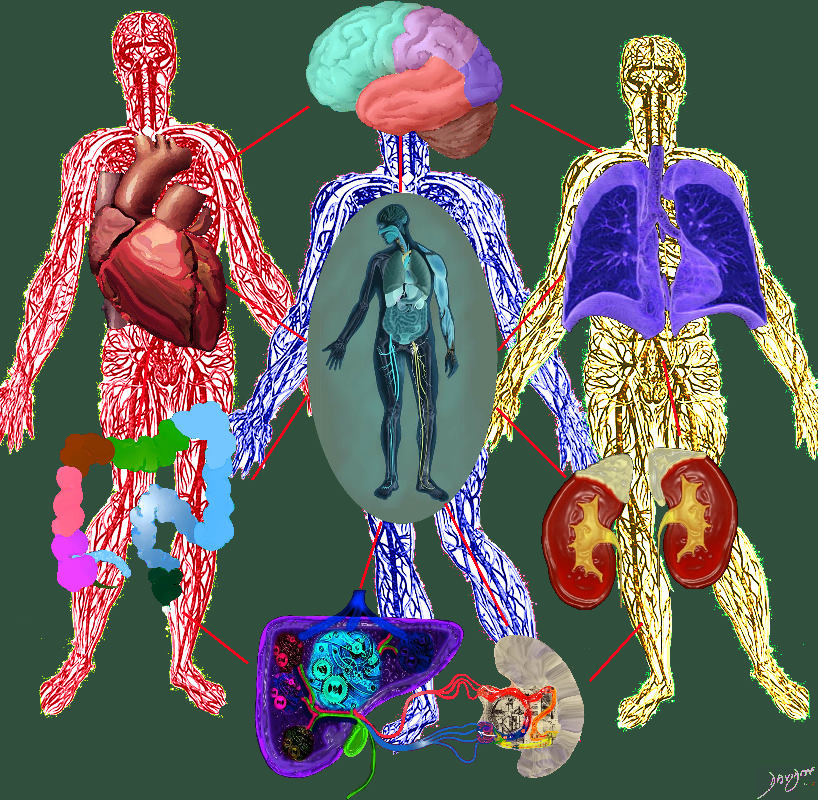
Part of structural bonding is based on an efficient transport system enabled by arteries, veins, nerves, lymphatics, and ducts. This allows metabolites to be transported to the organs to enable them to function and contribute to the wellbeing of the body. The image exemplifies the concept showing some of the transport systems in the background helping the organs to contribute to each other and to the body as a whole
Ashley Davidoff TheCommonVein.net bonds-0025
Connective Tissue Systems
Enabling Structural Bonding in the Body
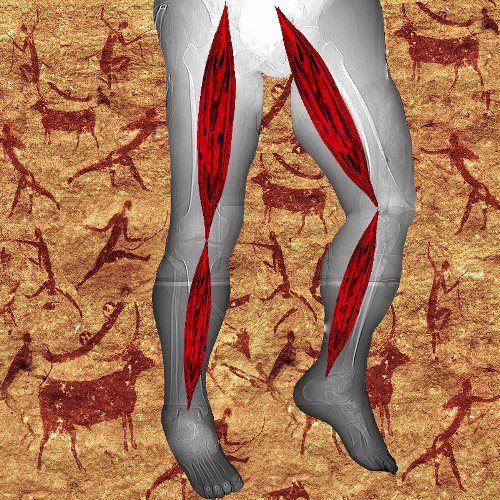
Ashley Davidoff
TheCommonVein.net

Ashley Davidoff
TheCommonVein.net
The connection of the knee bone to the thigh bone, the thigh bone to the pelvis and the pelvis to the sigmoid shaped spine, allowed homo sapiens to evolve into an upright animal, and liberated the upper limbs. The upright posture, together with an advanced brain, afforded man the opportunity to develop tools, manipulate his environment, and think. Thus humans were afforded a huge advantage in the biological environment.
https://youtu.be/fh31pQMB218?t=12
Skeletal System exemplifies the concept of parts and bonds magnificently
https://youtu.be/rxOyNUiYcl4?t=54
Muscular System also from 7active studio
Chemical Level via
Hormones Signaling Molecules Immune System Signaling
Specialized Functions of the Endocrine System – Metabolic Control
pituitary gland posterior pituitary gland thyroid adrenal cortex pancreas insulin bone muscle growth adipose tissue fat glucose parathyroid gland calcium breast lactation prolactin ovary estrogen FSH progesterone testis testes testosterone function physiology specialized function control endocrine system Davidoff art Davidoff drawing Davidoff MD 72353
Communication Occurs Through
Nervous System
Hormonal Signaling
Cell Signaling
Chemical Signaling at Synapses
Immune System Signaling
Cellular Communication in Tissues
Feedback Mechanisms
At societal level, human connections are vital for the health of the individual and of society. An elderly patient whose children and grandchildren have moved out of state, and who lives alone, becomes disconnected from the pulse of life and society. For the patient, incorporation into peer groups and into the mainstream is essential for well being and health.
?No man is an island, entire of itself;
every man is a piece of the continent, a part of the main. ?
John Donne?s ?Meditation XVII: ? Devotions upon Emergent Occasions?

46570c05.800 man woman lovers spine backbone
Ashley Davidoff MD
TheCommonVein.net 46570c05.800
Family
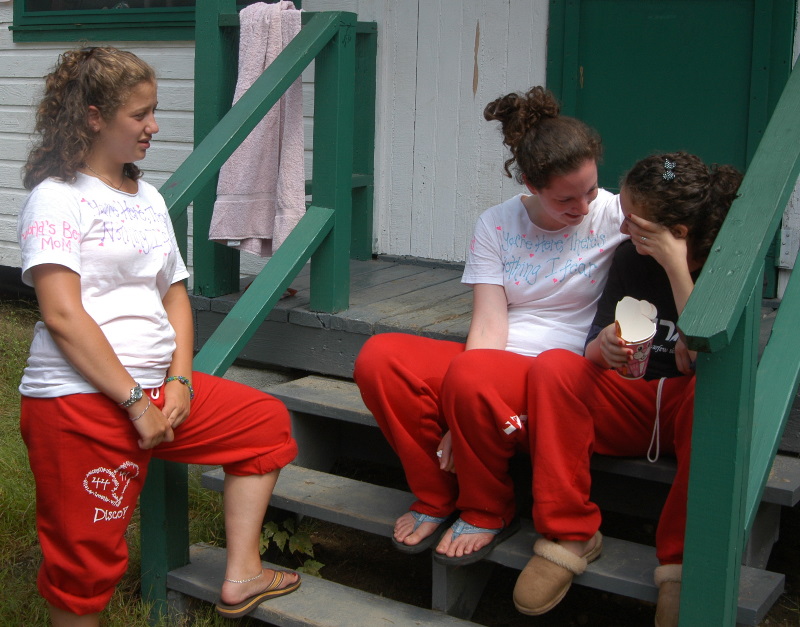 Friends Friends |
| The red sweats ? the motto on the shirt ?You ?re here- there?s nothing I fear? ? 82084pb01.800
Ashley Davidoff MD |
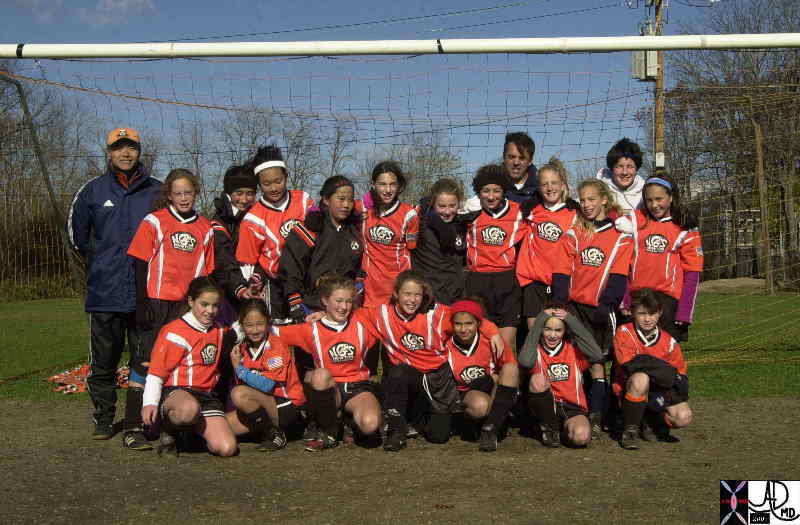 Team Team |
| 71216.800 soccer team people uniform link connections unity united
Ashley Davidoff MD |
Other Biological Units Connecting
Other Units Connecting
Ashley Davidoff MD
TheCommonVein.net
The knowledge of how structures are physically and functionally connected forms the basis of clinical symptoms and signs. Examination of the brain is carried out by examining the sensory organs and muscles. Consider a patient brought to the Emergency Room by a family member with a chief complaint of expressive aphasia (inability to express), also called Broca?s aphasia . ?We were eating dinner and suddenly he had difficulty speaking. He seems to know and understand what I am saying but he cannot express himself? she explains. Acute onset expressive aphasia usually occurs as a result of a stroke or a vascular accident (often thrombosis) in a branch of the middle cerebral artery that supplies the dominant hemisphere of the brain (left brain for dominant right handed people). The involved artery supplies the insula and frontoparietal operculum. The physician should immediately take a look at the patients face. The muscles of the face are controlled by inferior frontal gyrus, and a droop of the facial muscles, best seen as a droop of the right upper lip places the disease in the inferior frontal branch of the middle cerebral artery. The experienced physician greets the patient with a warm smile and may elicit a return smile, at which time this droop is more easily appreciated. Extending a hand to the patient for a handshake may reveal weakness in the hand or upper limb. The art of medicine is invoked in a warm and non provocative way by connecting the presenting problem with its relevant connections in the patient?s nervous system. In addition, appropriate diagnostic connections and actions are invoked in the thought processes and actions of the physician. The senses of the physician should be bristling all the time, with eyes and ears open to all and any clues, and reactions that are connected, integrated, respectful, kind, thoughtful and meaningful.
The Pulse
Examining the pulse, with its direct connection to the heart is another obvious example where the examination of one structure is truly the examination of a second connected structure. The pulse has a history based in ancient medicine. The Yellow Emperor Huang Ti of China (2698-2598 BC) understood that the pulse could be influenced by emotion. It is palpated with three fingers, and its evaluation was considered an art form linking it to the heart, kidney and liver. The finger that assesses the pulse closest to the hand connects to the heart, while the middle part of the pulse relates to connection with the liver, and the most proximal to the kidney.
Hippocrates (460-370BC), the father of medicine introduced the concept of clinical inspection and observation. He was known to take the pulse of the patient while taking a history, but did not elucidate any overt connections. According to Vesalius, Herophilus of Chalcedon (about 280BC) had major influence on the use of the pulse to diagnose disease, and made the observation that the pulse was not an innate characteristic of the arteries but was related to the heart.
There is a touching story of the pulse of a young lustful man, had relevance in history. Erasistratus from Ioulis (about 310-250BC) served as court physician to King Seleucus I who was one of Alexander the Great?s commanders and a founder of the Seleucid dynasty. King Seleucus had married a young and beautiful princess named Stratonice. After the marriage the king?s son Antiochus fell ill and Erasistratus was asked to determine the cause of the disease. Erasistratus noted that the pulse of the young prince (among other symptoms of passion) accelerated every time the beautiful princess, wife of his father, walked into the room. Erasistratus cleverly and kindly explained to King Seleucus the of the cause of his son?s malady and the malady was solved by the king giving up his wife and his kingdom of all the provinces of upper east Asia to his son. Plutarch?s commentary on the event is a marvel to read, and a painting by Jacques-Louis David, 1774 ?Erasistratus Discovering the Cause of Antiochus? Disease? is equally enthralling to behold. http://www.mlahanas.de/Greeks/Erasitratos.htm
A similar story is told about Galen (130- 200AD) (William Osler ? The Evolution of Modern Medicine see http://www.mlahanas.de/Greeks/Erasitratos.htm) who was summoned to evaluate a young woman who suffered from profound malaise. On examination by Galen there was neither fever nor change in her pulse. While he was chatting with her, with his finger on her pulse, he noted that her rate increased and became irregular when the conversation drifted to an actor called Pylades. He concluded that she was suffering the same malady as Antiochus, son of King Seleucus.
Both these stories describe the connections of the mind, the autonomic nervous system, the heart and the pulse.
Galen wrote 18 books on the pulse. Connecting disease with the pulse, he described a ?pulsus celer?, collapsing pulse indicating a wide pulse pressure, due perhaps to aortic regurgitation or perhaps high output failure, and ?pulsus tardus?, a slow rising pulse, indicating perhaps aortic stenosis. Other colorful examples include pulsus myurus (like a rats tail), pulsus caprizans with a double impulse, (like the leap of a goat), and pulsus formicans resembling the movement of an ant, indicating the weak and thready pulse of hypotension. (Fleming)
The modern examination of the pulse has been enhanced and advanced by application of the sphygmomanometer, pressure transducers, and echocardiography. These devices are routinely used to assess heart disease, and are far more accurate than palpation. Unfortunately they have superseded the art of pulse examination at the bedside. However, when faced with an acute situation, such as a person suddenly dropping to the ground, evaluation of the pulse is a rapid, useful, and sometimes lifesaving diagnostic maneuver. Basic CPR demands an ABC approach: Airway, Breathing, and Circulation. The Circulation is assessed by feeling the pulse, and evaluation of the pulse will determine the next step. A slow pulse, commonly implies a vagal reaction, or faint, and is often associated with pallor, sweatiness, and a complaint prior of nausea and dizziness or faintness. In this instance the findings connect to an excess parasympathetic tone, or vagal reaction, also called a vasovagal reaction. This reaction slows the heart and also causes the veins to dilate, so insufficient blood returns to the heart which is already slowing. The circulation becomes insufficient, and the patient faints due to lack of sufficient blood flow to the brain. The first step is to lay the person down so that the blood does not have an additional uphill battle to get to its destination. The second is to elevate the legs in order to empty the dilated veins of the pooled blood and return it to the heart, so there is more available for the heart to pump into the brain. The return to a normal heart rate is accompanied by improvement in the patient?s symptoms.
If on the other hand, no pulse is felt when a patient suddenly collapses, then cardiac arrest is diagnosed, meaning an abrupt failure of pump function. The most common cause includes ventricular fibrillation and ventricular tachycardia, which are responsive to defibrillation. Other causes are less common and include asystole and pulseless electrical activity, which are not responsive to defibrillation.
The fact that the heart is connected to the arteries, allows the clinician to examine the pulse, and gain insight into the health of the heart. In early times this connection was not understood. Today it is involved in basic lifesaving techniques.
Connections and connectedness are essential to biological structure. Bonds and bonding in the molecular environment are elemental and extend through all of biology and society. The pathological equivalent of disconnectedness ranges from the simple to the complex. Disconnectedness in the clinical world may be congenital or acquired. Transposition of the aorta is a congenital abnormality where the aorta is connected to the wrong ventricle. Survival is impossible if the disorder is not surgically corrected. Acquired disconnectedness occurs in easily treated traumatic dislocation of a joint, but can be life threatening in traumatic rupture of the aorta. Loss of connections to society occurs to many unfortunate individuals and societal awareness to this problem needs to be heightened. Biology depends on strong and meaningful connections.
Principles
At the Cellular Level
Donor
Organs Connecting
People Connecting
Family
 Friends Friends |
| The red sweats ? the motto on the shirt ?You ?re here- there?s nothing I fear? ? 82084pb01.800
Ashley Davidoff MD |
 Team Team |
| 71216.800 soccer team people uniform link connections unity united
Ashley Davidoff MD |
Other Biological Units Connecting
Other Units Connecting
Ashley Davidoff MD
TheCommonVein.net
Links and Connections in Disease
Disease of One Causes Disease of the Other
|
An Obvious Dislocation No Subtleties about this One |
|
Following a fall this young patient has an obvious dislocation of the elbow joint. A dislocation reflects an abnormal position as well as an aberrant connection or link between the three structures ? humerus, radius and ulna. aberrant connection72041.800 elbow bone olecronon fracture humerus ulna radius fx dislocation position trauma plain X-ray Ashley Davidoff MD |
Links and Connections in Biology
The Common Vein Copyright 2007
The human body is an exceedingly complex structure ? a masterpiece of intricacies constructed from simple biological and chemical units. However, its functional integrity would be highly compromised without the vast series of structural and chemical links that connect its cells, tissues, and organs. In this way, the concept of links and connections underlies biology and medicine and is critical to the work of a physician.
The interdependence of biological structural units first takes form at the atomic level with a variety of bonding interactions, including covalent and ionic bonds. Covalent bonds, which arise from electron-sharing between two atoms, are easily distinguished from ionic bonds, which require electrostatic attractive forces between two oppositely charged ions. Both types of bonds are actually the result of a careful balancing act, as the positive nuclei of the two atoms experience repulsive forces. In fact, such electrostatic forces must be continually considered as one progresses up the ladder of structural complexity toward intermolecular interactions and the formation of compounds.
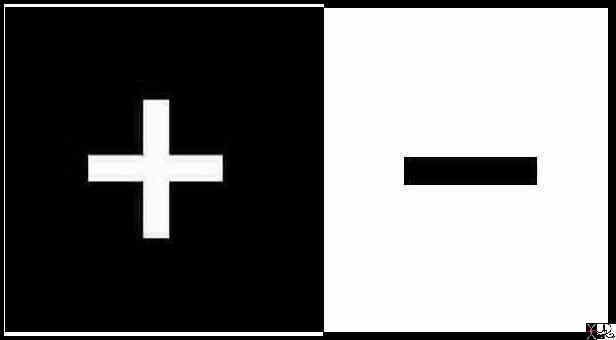
84154b04.698 positive and negative extreme states black and white
Ashley Davidoff MD
Having risen above the atomic and molecular levels one may next consider the cell, which is the fundamental unit of biological structures. Incidentally, it is also the site of myriad linkages, as connections between organelles like the endoplasmic reticulum and Golgi apparatus allow the cell?s system of transport and packaging to take form. In this way, one sees the first example of links and connections as critical for establishing structures of particular function within an organism.

70983.800 molecules atoms bonds links connections relations collage Ashley Davidoff art
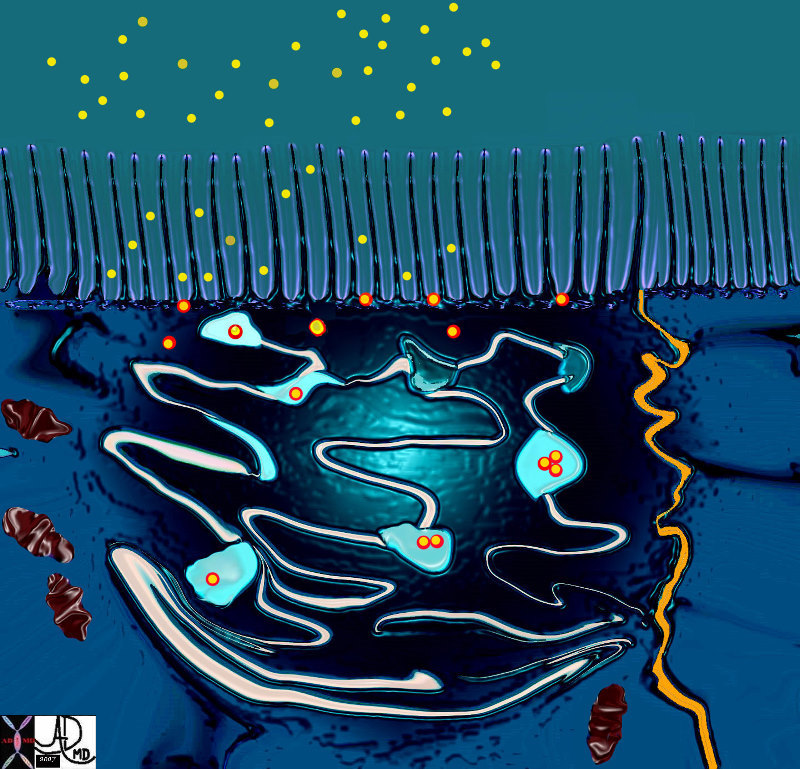
71798b13b03.800 cell endoplasmic reticulum mitochondria fat droplet absorption by microvilli processing cisterna interdigitation of cells pinocytic vesicle intercellular space function absorption Davidoff art Ashley Davidoff MD
At the Cellular Level
John Donne a clergyman and poet from the renaissance period stated that ?? No man is an island ?? In the same way no cell, organ, body or community is an island. Each is connected and dependent on the other members of the society in which they live. They are connected both structurally and functionally.
While such intracellular connections are of great import, the linkages between individual cells must also be considered, as they allow for the formation of tissues and organs with distinct functional characteristics. Two examples of such connections are shown below.

13236 liver hepatocyte liver cords sinusoids cytoplasmic granules connective tissue reticulin histopathology histology Courtesy Barbara Banner MD
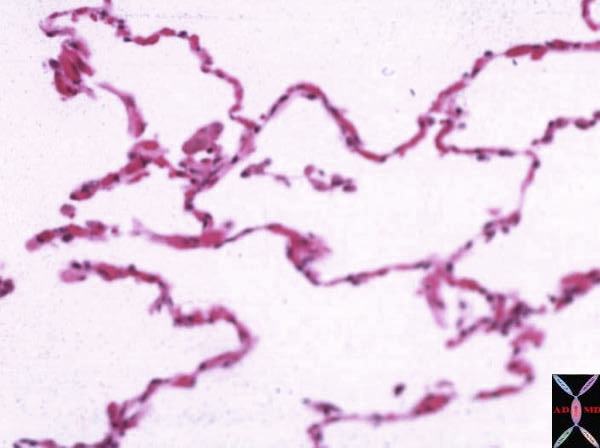
Normal lung- Lower magnification Note cup-shaped alveolar spaces outlined by delicate thin alveolar capillary membrane.
Courtesy Armando Fraire MD. 32819 keywords lung pulmonary normal alveolus alveoli histology interstitium interstitial

A drawing of the histology of the myofibrils of the heart showing how they ae connected and related as a continuum enabling a coordinated contraction pattern. Courtesy Ashley Davidoff MD. 32907 code cardiac heart muscle syncitium histology Ashley Davidoff art
The manifestation of these intercellular associations is the development of progressively greater, more complex structures, as tissues interact to form distinct organs. The image below, for instance, depicts this type of interaction, as solid plates of bone are joined to each other at the coronal and sagittal sutures, allowing the skull to take form.
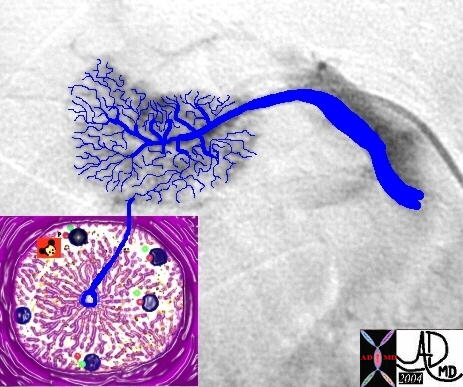
? The Hepatic Vein
13009 W I 13 liver + portal triad lobule + anatomy histology portal vein bile duct hepatic artery central vein hepatic vein
Ashley Davidoff
TheCommonVein.net
Bonds Cement Bridges Joints Interstitium Connective Tissue Ligaments Sutures Vessels
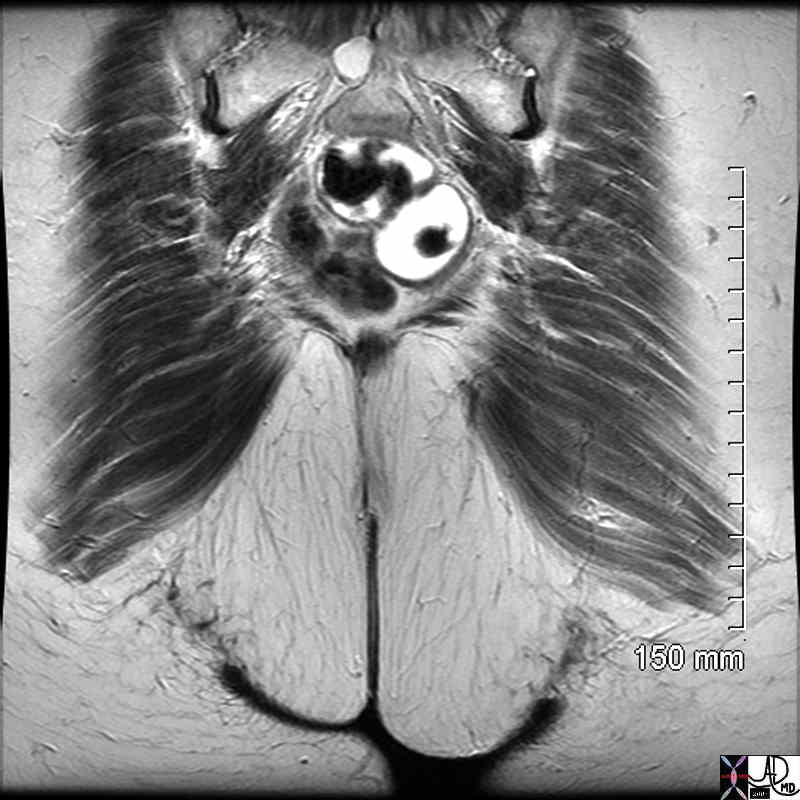
Note the linear and parallel orientation of the muscle fibers of the gluteus muscles (charcoal) and the reticular pattern of the connective tissue of the skin of the buttock (light gray)
70885.800
keywords skin muscle gluteus buttock folds skin interstitium connective tissue vessels links bonds connections MRI coronal view
Ashley Davidoff MD
TheCommonVein.net
From Head to Toe
The highly varied array of organs within the body allows for great multiplicity of function within an organism. However, the value of such diversity would be negated without the system of linkages that allows the organs to communicate with one another. This system consists of both structural connections, such as the network of tubules shown below, and chemical links established and maintained by the endocrine and exocrine systems of the body.
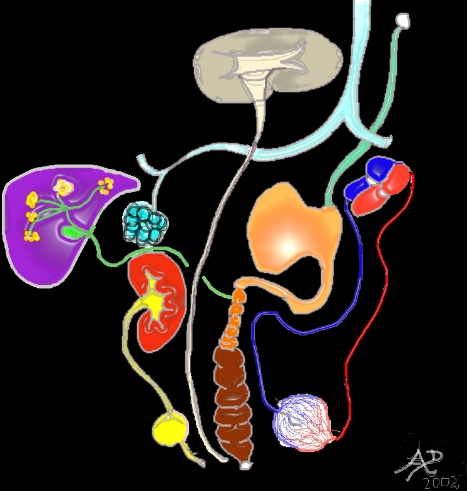
32369 tube colon small bowel lung bronchus bronchi esophagus stomach large bowel bile duct ureter brain liver urinary bladder heart cardiac artery arteries arterial system veins venous system tube principles Davidoff art Courtesy Ashley Davidoff MD
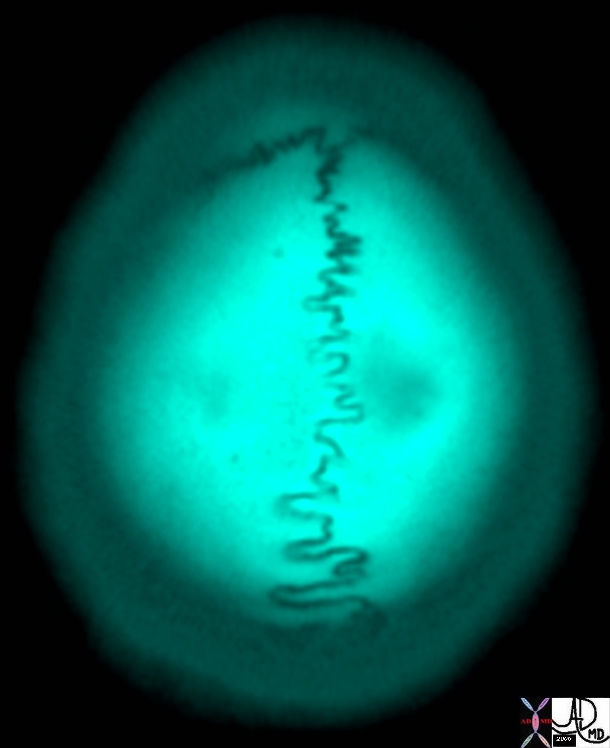
46304b01 bone skull suture shape CTscan
Ashley Davidoff MD
TheCommonVein.net
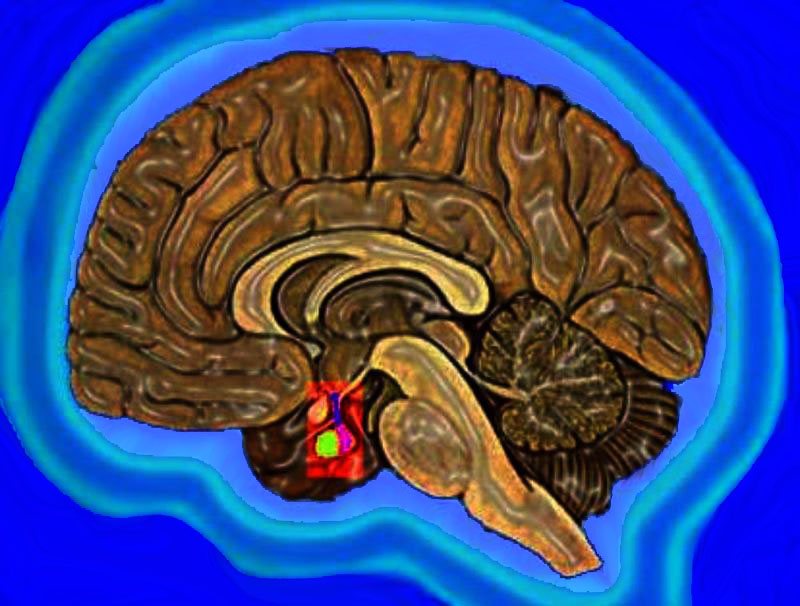
14798 04.800 brain pituitary anatomy normal Ashley Davidoff art
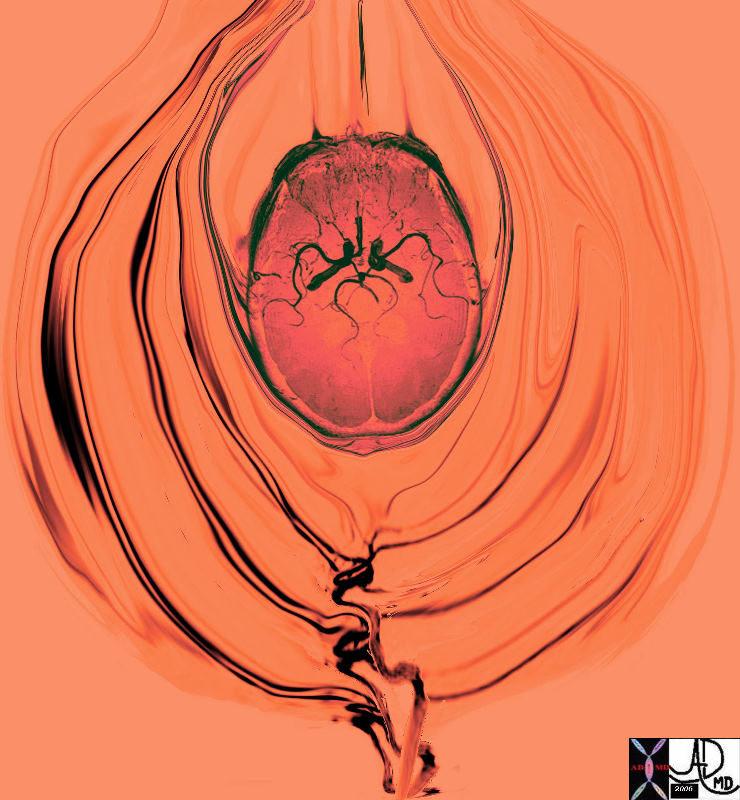
46352b19.800 head brain blood supply internal carotid artery branches circle of Willis MRA 3D TOF Davidoff MD normal anatomy tree of knowledge
Ashley Davidoff MD
TheCommonVein.net
Vessels Nerves and Lymphatics ? The Cables
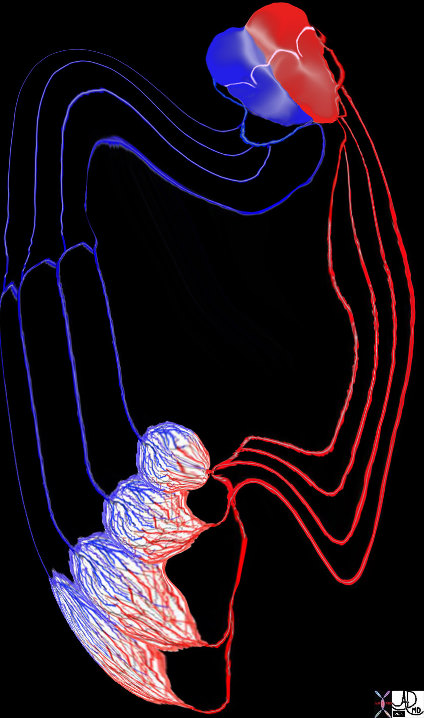
32368b05.800 cardiovascular system heart cardiac artery arteries capillary capillaries arterioles venules veins negative firces positive forces road highway TCV the common vein applied biology
Ashley Davidoff MD
TheCommonVein.net
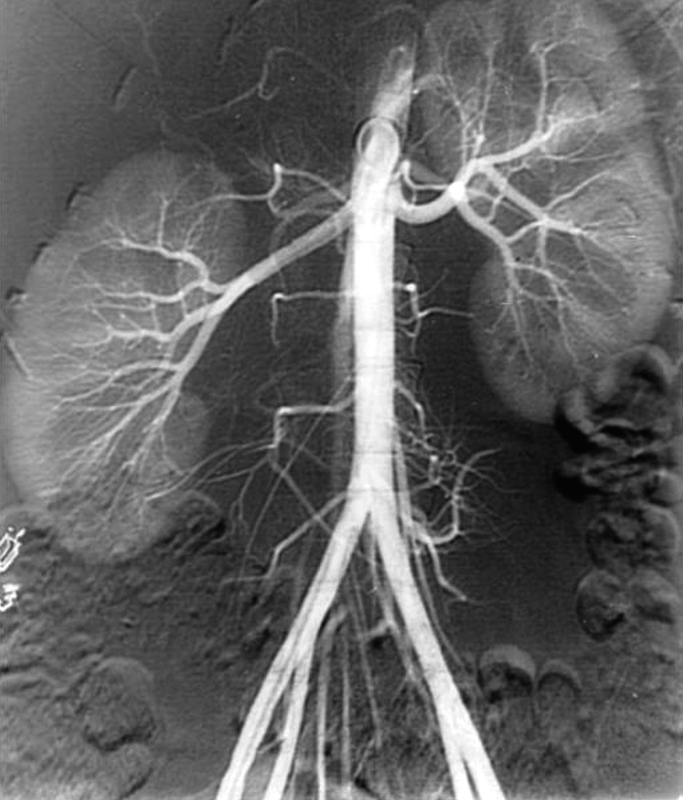
10254
Ashley Davidoff MD
TheCommonVein.net
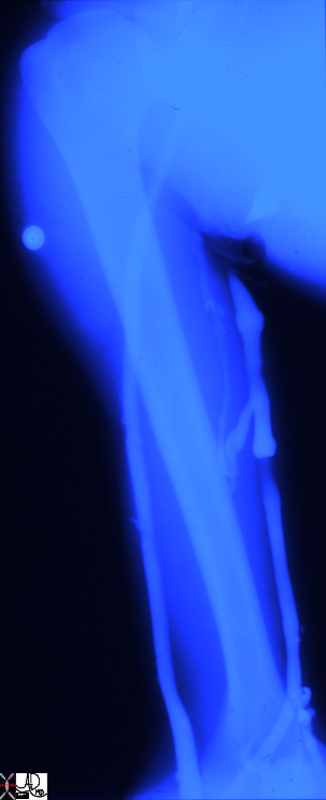
10392.800 vein arm basilic valve
Ashley Davidoff MD
TheCommonVein.net
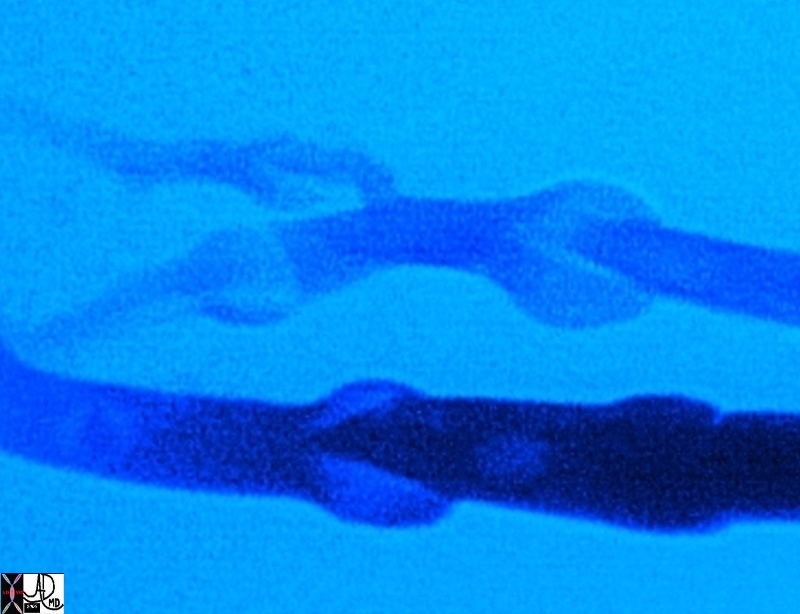
26032d.800 vein tube valve flow normal anatomy
Ashley Davidoff MD
TheCommonVein.net
Nerves
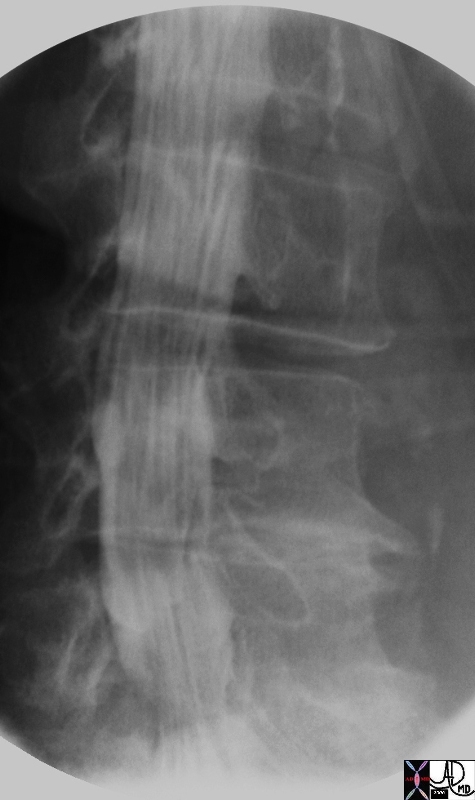
46523.800 spinal cord cauda equina nerves anatomy applied biology normal
Ashley Davidoff MD
TheCommonVein.net
Ducts
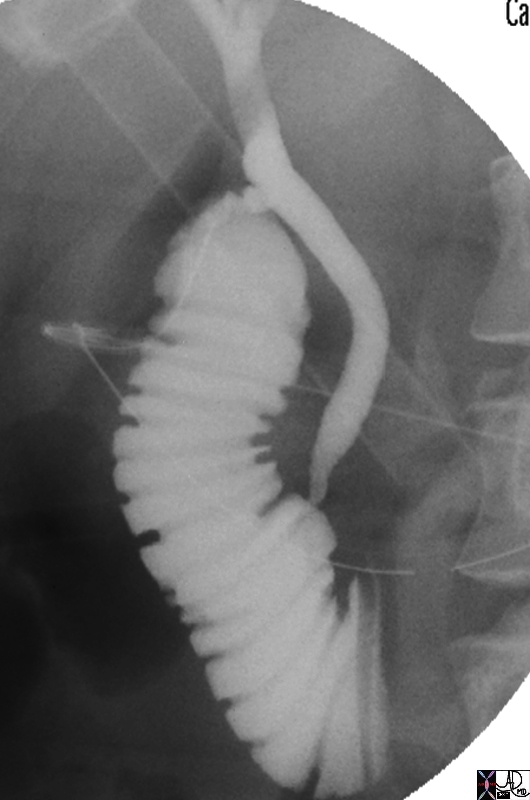
71731.800 bile duct duodenum papilla valvulae conniventes small bowel common bile duct CBD CHD common hepatic duct links connections tubes cystic duct remnant normal biology anatomy intraoperative cholangiogram following cholecystectomy Ashley Davidoff MD
In this way, by visualizing the linking of atoms to form molecules to form compounds to form cells, tissues, organs, and the human body, one realizes the potency of links and connections as embodiments of the ?units to unity? concept. Furthermore, they are the means by which human relationships form, as one organism interacts with many others to form couples, families, and communities. The theme may even be extended to the structure of our cities and towns, as elaborate networks of roads are established to facilitate the human interactions described above. Links and connections, then, represent a concept at the very heart of our existence.

60641 abdomen small bowel ileum jejunum portal vein normal anatomy TCV applied biology volume rendering CTscan Ashley Davidoff MD
Joints
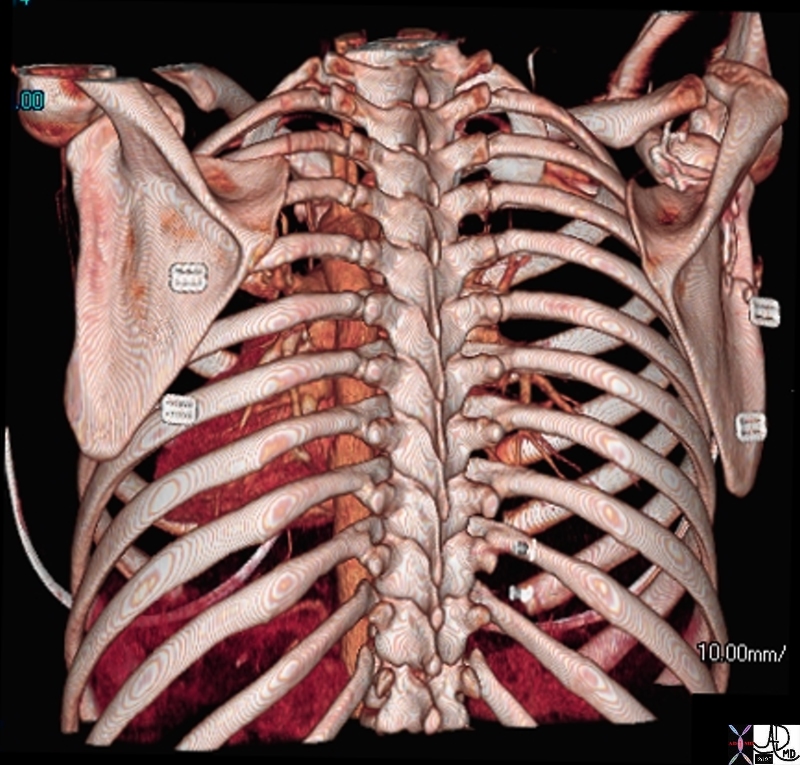
49640 bone rib thoracic spine spinous processes scapula protection support CTscan volume rendering
Ashley Davidoff MD
TheCommonVein.net
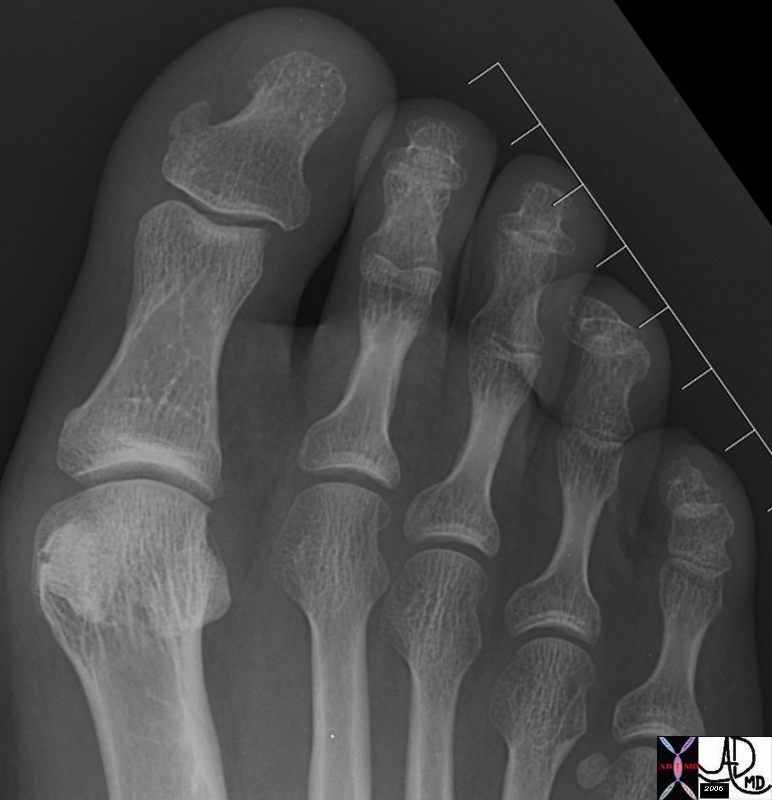
46712b01 bone foot feet phalanges interphalangeal joints metatarsophalangeal joints normal anatomy applied biology X-ray plain film
Ashley Davidoff MD
TheCommonVein.net
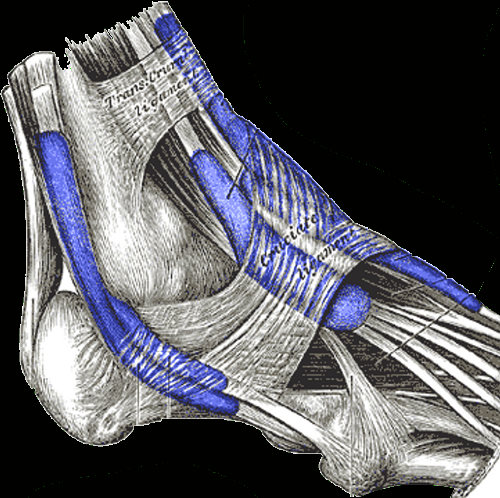
Ashley Davidoff MD
TheCommonVein.net

46570c05.800 man woman lovers spine backbone
Ashley Davidoff MD
TheCommonVein.net

56889 fish processors in Portugal young women uniform gum boots TCV the common Vein Davidoff photography Ashley Davidoff MD

Note the Bunker Hill monument in the far right of the image- Importance of linking to our heritage and history83557.800 highways waterways reservoirs storage stations factories homes transport systems bus cars Ashley Davidoff photography
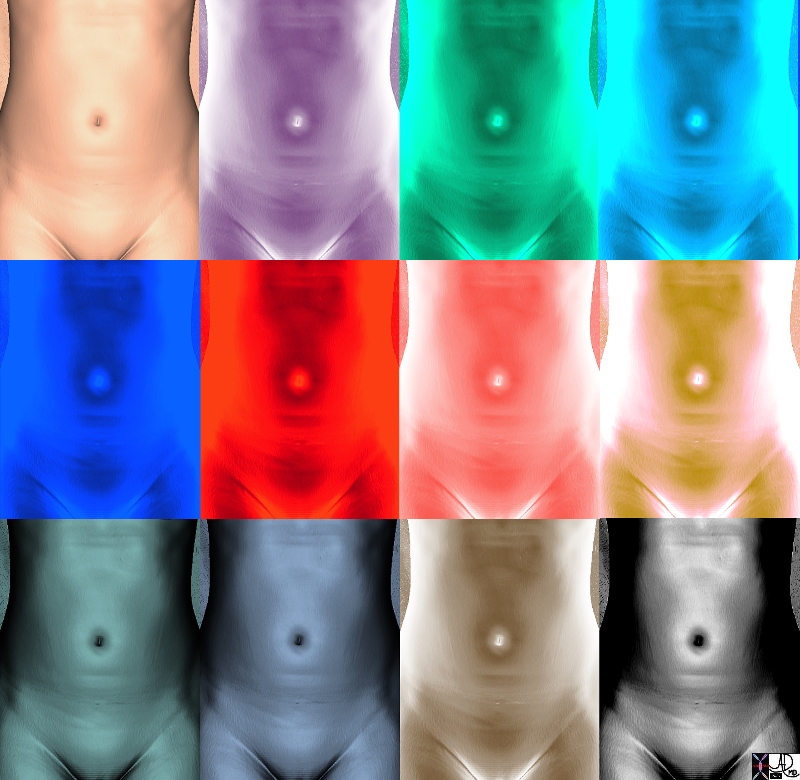
49703b17c01.801 body in 12 moods umbilicus abdomen a day in the life a year in the life Ashley Davidoff art

This group of pine trees share space sun and water. They share the seasons. Usually not seen and not heard are their roots which share sustenance from the earth and they health and growth is dependent on this as well. The roots of the first two trees are intermittently connected and linked as can be seen by the first pair of trees whose roots can be seen growing toward each other. they are of course in competition but they have learned to live share, and combine with other trees to form a forest which in the end is bigger and more powerful than the individual parts. Mason Rice School park trees links and connections share bond roots sun environment Davidoff photography Ashley Davidoff art 91016p.8s

The monkey bars are connected to a chain and the chain is connected top a wooden frame. In this case the functionality of the toy is dependent on the strength of the connections and bonds. The tree and the bushes in the background are of course dependent on the their roots to connect them to the ground and nutrition and the branches are connected to the atmosphere and the sun. links and connections monkey bars units to unity sphere half two halves make the whole Davidoff photography Ashley Davidoff art 90997p.8k.8s
Quotes
Quantum Theory and Connections
Quantum theory thus reveals a basic oneness of the universe. It shows that we cannot decompose the world into independently existing smallest units. As we penetrate into matter, nature does not show us any isolated ?building blocks,? but rather appears as a complicated web of relations between the various parts of the whole. These relations always include the observer in an essential way. The human observer constitute the final link in the chain of observational processes, and the properties of any atomic object can be understood only in terms of the object?s interaction with the observer.
Fritjof Capra
In The Tao of Physics (1975), 68.
Oneness for Other Reasons
Quantum theory thus reveals a basic oneness of the universe. It shows that we cannot decompose the world into independently existing smallest units. As we penetrate into matter, nature does not show us any isolated ?building blocks,? but rather appears as a complicated web of relations between the various parts of the whole. These relations always include the observer in an essential way. The human observer constitute the final link in the chain of observational processes, and the properties of any atomic object can be understood only in terms of the object?s interaction with the observer.
Fritjof Capra
In The Tao of Physics (1975), 68.
Interactions and Connections
We have now got what seems to be definite proof that an X ray which spreads out in a spherical form from a source as a wave through the aether can when it meets an atom collect up all its energy from all round and concentrate it on the atom. It is as if when a circular wave on water met an obstacle, the wave were all suddenly to travel round the circle and disappear all round and concentrate its energy on attacking the obstacle. Mechanically of course this is absurd, but mechanics have in this direction been for some time a broken reed.
Henry Moseley
Letter to Margery Moseley (2 Feb 1913). In J. L. Heilbron (ed.), H. G. J. Moseley:
The Life and Letters of an English Physicist 1887-1915 (1974), 201.
Atoms and Organic Molecules
We set out, therefore, with the supposition that an organised body is not produced by a fundamental power which is guided in its operation by a definite idea, but is developed, according to blind laws of necessity, by powers which, like those of inorganic nature, are established by the very existence of matter. As the elementary materials of organic nature are not different from those of the inorganic kingdom, the source of the organic phenomena can only reside in another combination of these materials, whether it be in a peculiar mode of union of the elementary atoms to form atoms of the second order, or in the arrangement of these conglomerate molecules when forming either the separate morphological elementary parts of organisms, or an entire organism.
Theodor Schwann
Mikroskopische Untersuchungen über die Uebereinstimmung in der Struktur und dem Wachsthum der Thiere und Pflanzen (1839). Microscopic Researches into the Accordance in the Structure and Growth of Animals and Plants, trans. Henry Smith (1847), 190-1
Linking and Bonding Atoms and Molecules
[The] structural theory is of extreme simplicity. It assumes that the molecule is held together by links between one atom and the next: that every kind of atom can form a definite small number of such links: that these can be single, double or triple: that the groups may take up any position possible by rotation round the line of a single but not round that of a double link: finally that with all the elements of the first short period [of the periodic table], and with many others as well, the angles between the valencies are approximately those formed by joining the centre of a regular tetrahedron to its angular points. No assumption whatever is made as to the mechanism of the linkage. Through the whole development of organic chemistry this theory has always proved capable of providing a different structure for every different compound that can be isolated. Among the hundreds of thousands of known substances, there are never more isomeric forms than the theory permits.
Nevil Vincent Sidgwick
Presidential Address to the Chemical Society (16 Apr 1936), Journal of the Chemical Society (1936), 533.
The Electron and Its Behaviour or Misbehaviour
?where the electron behaves and misbehaves as it will,
where the forces tie themselves up into knots of atoms
and come united?
D.H. Lawrence
?Give Us Gods?, David Herbert Lawrence, The Works of D.H. Lawrence (1994), 354.

